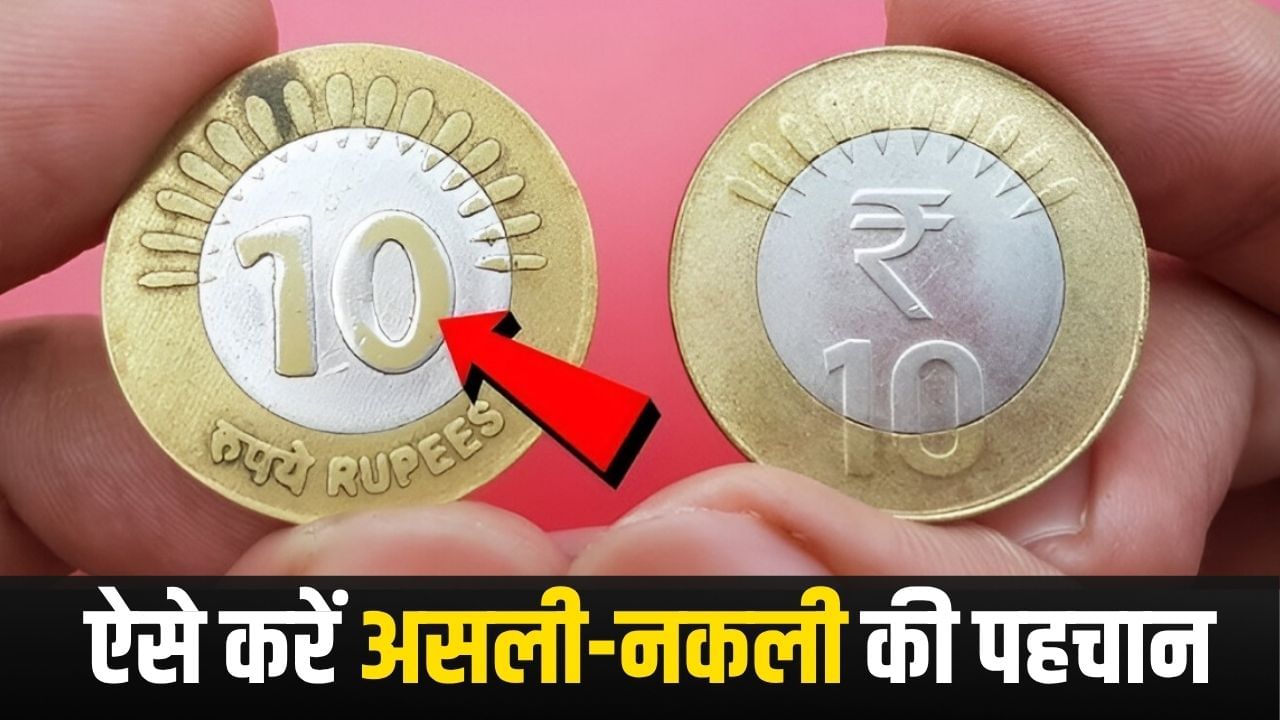10 rupees coin is not fake!
Rumors are often heard about ten rupee coins. For this reason, many shopkeepers have started clipping by taking ten rupees coins. But you will be surprised to know that so far, ten rupee coins of 14 different designs have come in the market. The central bank has also given complete information about all these designs on its website. Nevertheless, as soon as a rumor of running fake coins emerges, shopkeepers and common people get nervous about taking coins. Many times people start thinking that this coin is real or fake by looking at the holders of the coin or a sign of rupee. So let’s know the easiest and right way to identify the real ten rupee coin, so that you never have trouble about this.
The design of coins changes
Reserve bank of india It has clearly stated that the design and patterns of coins keep changing from time to time. This does not mean that a new or different looking coin is fake. For example, there were 15 stripes in the 10 rupee coins issued in 2009. Later, in the coins released in 2011, the number of those stripes was reduced to 10 and a sign of the rupee was kept above 10. Both types of coins are valid. Therefore, seeing only a coin appearance, it is wrong to consider it to be fake. RBI says that whatever legal 10 rupees coins are in the market, they should be accepted in transactions.
If the shopkeeper refuses to take the coin, do this work
If the shopkeeper refuses to take your 10 rupee coin, then there is no need to panic. You can go to the nearest bank comfortably and get the coins checked. The bank sends suspected coins to RBI. If the coin turns out to be real in the investigation, you will get back. If it turns out to be fake then further legal process can go on.
According to the law, it is mandatory for all banks to accept legitimate coins and give notes in return. The sections of the IPC may also apply against those who do not take coin without reason. Usually, 10 rupee coins are accepted without doubt in places like railway ticket counter, toll plaza, post office, supermarket and mall.
It is very difficult to make a coin of 10 rupees
Fake coin making is not easy as a note. According to the information received in 2018, the cost of making a 10 rupee coin was about Rs 5.54. Today prices must have increased, that is, it is natural to increase the cost of coin making. The expenses and hard work that will be spent in making fake coin, it is often not beneficial for that business.
Also, it is difficult to finish the coins and copy of quality. Fake coins often try to mimic the old design, but the coating, the delicate edge of the edges and the glow are not real. Therefore, the spread of fake coins is less common. However, if you want to know the reality of a 10 rupee coin, then you can take help of these easy methods.
- Weight and metal: A coin of 10 rupees is made of two types of metals. The outer part is of aluminum-bronze and the middle part is nickel-bone. The color of the fake coin can be faded or uneven and there will be a difference in weight. The real coin is shiny and accurate.
- Design and carving: Ashoka Pillar and India and India are written on the coin. On the other hand, 10 rupees and a special mark can be like a lotus flower. There are fine lines on the edges of the real coin. Carving of fake coin can be blurred or wrong.
- Test of voice and magnet when falling: The real coin makes a clean and metallic sound, while the sound of a fake coin is hollow. The real coin is light magnetic, is lighter than the magnet, the fake coin either sticks too much or not at all.
- Number for information: The Reserve Bank has released toll free number 14440 for information about 10 rupees coins. You can also get complete information about coins by calling.
